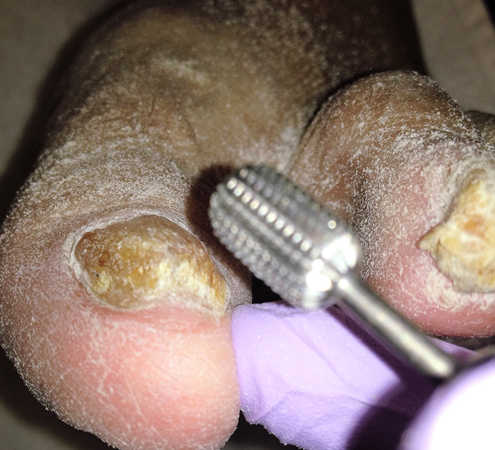Debridement
1. [noun] skin debridement is the process of removing nonliving (sometimes necrotic) tissues from pressure ulcers, burns and other wounds; In debridement, dead tissue is removed so that the remaining living tissue can heal. NOTE: this is usually in the scope of woundcare nurses, physician, podiatrist and not foot care nurses. PRECAUTION: Some ulcers or wounds occur in areas where blood flow is impaired, for example, like the foot ulcers that can accompany diabetes mellitus . A nurse or physician may decide not to deride the wound because blood flow may be insufficient for proper healing . Also: excision of devitalized tissue and foreign matter from a wound. Footcare Nursing debridement includes: reduction of thickened nails, corns or calluses using a rotary tool and/or disposible files (some provinces use scapels). This is due to an overgrowth following an injury, fungal infection, pressure or friction. See: https://medical-dictionary.thefreedictionary.com/débridement ; Accessed May 19 2019. Image source: PEDEd
Source: https://medical-dictionary.thefreedictionary.com/d%C3%A9bridement

Frequently Asked Questions
How does foot debridement differ when addressing thickened nails and calluses compared to wound debridement practices?
In foot care, debridement involves reducing overgrown nails, corns, or calluses with rotary tools or files to manage friction and pressure. This contrasts with wound debridement, which targets the removal of nonliving tissue from ulcers or burns for healing.
Which everyday foot care scenarios might encourage the use of debridement techniques for managing callus buildup?
Everyday activities, such as wearing tight shoes or standing long periods, can lead to callus formation. Debridement through careful filing or rotary tools is used in these cases to gently reduce calluses, improving comfort and maintaining healthy foot skin.